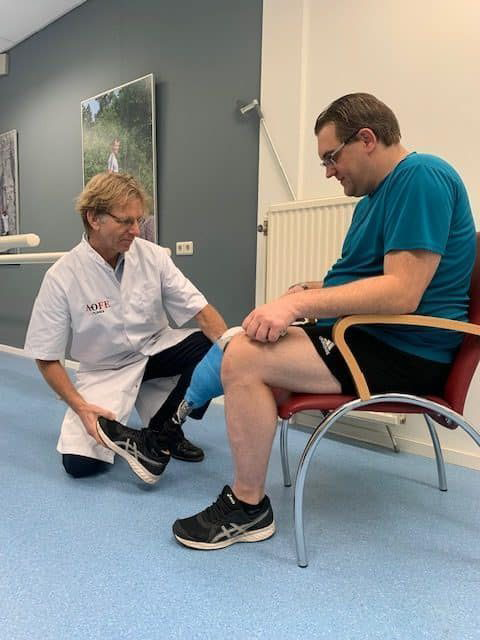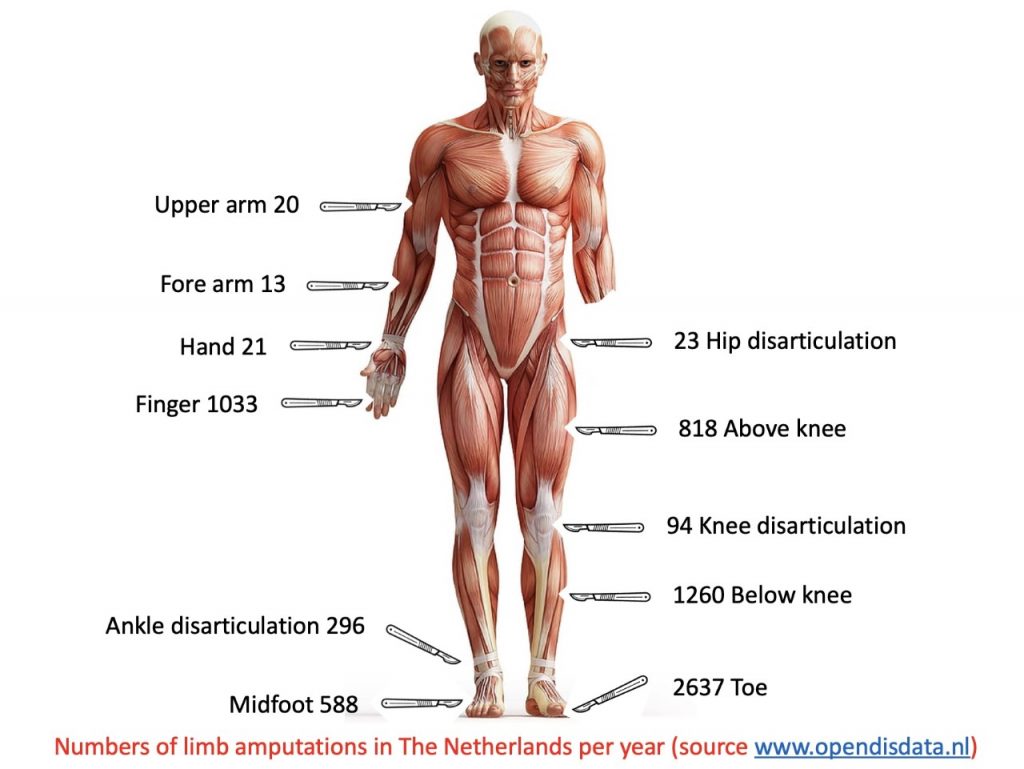
Primary amputation with or without osseointegration prosthesis
Usually, after a serious accident or infection, often with several operations, an arm or leg can become so disfigured that amputation is the best option as a last resort. Because there are few surgeons who specifically specialise in arm and leg amputations and reconstructive surgery such as osseointegration is also little known, amputation is not readily advised.
Some people have a fixed knee with which they have many problems. People with such a dysfunctional or painful arm or leg are often insufficiently aware of the options available after amputation. Primary amputations at AOFE Clinics can be performed by a highly experienced and dedicated team of specialists at every level in close consultation with a rehabilitation doctor and prosthetist.
When is a primary limb amputation necessary
Usually after a serious accident or infections with often various operations, an arm or leg can be so mutilated that an amputation is the best solution as the last option. Because there are few surgeons who specifically focus on arm and leg amputations and reconstructive surgery such as osseointegration is still little known, amputation is not often recommended. Many people with such a functional or painful arm or leg are also insufficiently aware of the possibilities after an amputation. Primary amputations in the AOFE Clinics can be performed by a highly experienced and dedicated team of specialists at every level in close consultation with a rehabilitation physician and prosthetist.

We care about our patients
At AOFE Clinics, we understand the critical importance of primary amputation and limb salvage procedures in the context of patients’ overall health and well-being. Our medical team remains committed to providing open and comprehensive care to patients facing limb-threatening conditions, including diabetes-related complications, traumatic injury, and vascular issues. Through a systematic review of the latest literature and clinical references, we ensure that our assessment and management techniques are based on the most current evidence available.
In cases where limb salvage is the primary objective, our multidisciplinary approach brings together specialists from various fields to explore innovative and patient-centric solutions. We have observed that in a number of instances, limb salvage procedures not only extend the life expectancy of patients but also contribute to a better quality of life, allowing them to follow their desired activities with less compromise. Our long-term follow-up and assessment terms include monitoring factors such as tissue viability, infection rates, and mortality indicators, which enable us to gauge the success of the procedures we perform.
Furthermore, we recognize that primary amputation remains a critical choice for certain patients, especially when faced with poor long-term outcomes due to extensive trauma or compromised vascular health. In such cases, our team offers a holistic approach to ensure that patients’ rights are upheld and their health is prioritized through a comprehensive care plan. Our aim is to provide patients with the best information possible so they can make informed decisions regarding their health and quality of life. Whether it’s through limb salvage or primary amputation, our mission is to empower patients to lead a life that is as full and active as possible.
Who is eligible for primary amputation of an arm or leg?
- There are no more surgical options to preserve the extremity
- The complaints are of such severity that primary amputation is justified
- There are no psychological abnormalities that play a role in the desire for amputation
- Contact with fellow sufferers strengthens the desire for amputation
Who is not eligible for primary amputation of an arm or leg
- There are still surgical options to preserve the extremity
- The complaints do not justify primary amputation
- There are psychological abnormalities that play a role in the desire for amputation
- There are doubts about the indication
What can be the benefits of an amputation?
- No more complaints of problematic arm or leg
- Making a fresh start with a prosthesis
What are the risks of an amputation?
- Irreversible operation
- Limited mobility
- Problems (with healing) of the stump that sometimes require further shortening of the stump
- Phantom sensation or pain or stump pain
- Problems with the socket prosthesis
- Risk of falling, especially at night when you want to get out of bed
